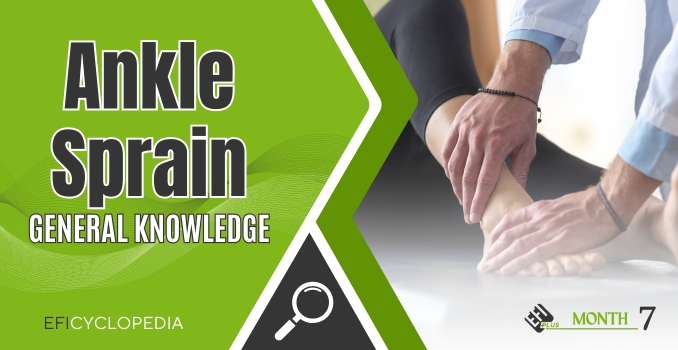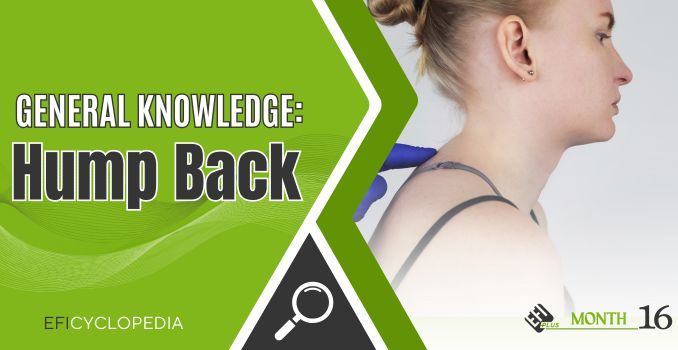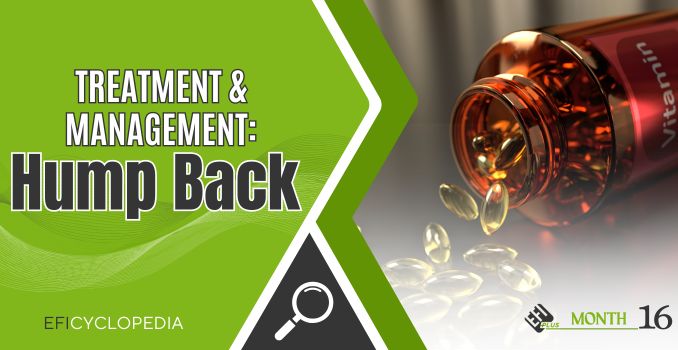Month 16
Upper Back
MONTH 16 OFFER: HUMPBACK
Gear up for a thrilling dive into Month 16 of EFIcyclopedia's wellness exploration!
This month, we focus on the challenges of Humpback, delivering expert advice, valuable knowledge, and custom workouts designed to help you ease discomfort and restore mobility.
Conquer your humpback and tap into your spine's full potential. We'll provide the tools and insights to correct this postural imbalance and enjoy a pain-free, energized life.
WHAT YOU NEED TO KNOW: Understanding the complexities of humpback posture is vital to finding effective solutions. This comprehensive manual helps you gain a deep understanding by delving into the anatomy of the upper back and identifying the root causes of this postural deformity.
- Understanding the Anatomy: A thorough exploration of the upper back's muscles, joints, and mechanics, highlighting their importance for total health.
Examining the Root: Explore the multifaceted factors influencing humpback deformity, including postural issues, muscular imbalances, and underlying spinal conditions such as Scheuermann's disease, osteoporosis, etc.
Know the Signs: Recognizing the distinct clinical symptoms of humpback deformity in contrast to other upper back and neck pain issues.
HOW: You will gain the knowledge to accurately diagnose humpback deformity through a comprehensive patient history, physical examination, and diagnostic imaging, including X-rays, MRIs, and CT scans, to uncover the underlying factors contributing to this postural condition.
WHAT TO DO: Equip yourself with the knowledge of treatment techniques and lifestyle modifications to prevent humpback. Explore diverse treatment options and take proactive steps toward enhancing your spinal health.
- Individualized Management Approach: Learn step-by-step guidance on therapeutic exercises that strengthen and stretch your upper back muscles. These exercises can improve your postural alignment and minimize the appearance of a humpback.
Prevention and Management: Optimize your upper back health and minimize the risk of humpback deformity through strategic dietary modifications, lifestyle adjustments, and effective self-care practices.
WHY THIS MATTERS: When you understand your body, you're empowered to make decisions to prioritize your health and overall well-being.
- Quality of Life Improvement: Humpback can significantly limit daily function and quality of life. By understanding these challenges, you can implement strategies to ease pain, improve movement, and boost overall well-being.
Informed Decision-Making: Whether considering treatment options, lifestyle changes, or preventative measures, a deep understanding of humpback deformity enables individuals to make choices that reflect their preferences, values, and health goals.
Take control of your posture with our comprehensive guide to humpback management. Join us for Month 16 of EFIcyclopedia to access curated content focused on humpback. Let's improve your spinal health together!
Introduction to Upper Back
Your back muscles help control your posture, let you move, and help you breathe. They start at your neck, run down your spine, and end above your hips. Having occasional back pain or stiffness is normal, but visit a provider if you experience pain that lasts more than a week.

Ankle - General Knowledge
The ankle joint is as vital and versatile as the other structures in human anatomy. Delving into its anatomical complexities, physiological roles, and clinical ramifications is a journey that warrants in-depth exploration. Thoroughly scrutinizing the basic principles and latest developments and comprehending every aspect of this extraordinary joint's anatomy, biomechanics, and functionality enables healthcare providers to accurately evaluate patients and create customized treatment strategies aligned with their unique needs and objectives.
General Knowledge: Hump Back
Hyperkyphosis is a spinal deformity causing a forward-curved posture of the upper back (thoracic spine). Posture is the way you position your body. Posture changes throughout the day depending on what you are doing and how long you have been doing it. Sometimes, a person's posture can cause the upper back curvature to become excessive and stiff.
Assessment: Hump Back
Assessment of humpback (kyphosis) is essential for accurately diagnosing the condition, identifying its underlying causes, and formulating a targeted treatment plan. Kyphosis is characterized by an excessive outward curvature of the thoracic spine, which can be congenital, postural, or the result of degenerative diseases
Treatment & Management: Hump Back
Acetaminophen can be used for pain relief if NSAIDs are not suitable (e.g., for those with gastrointestinal issues or other contraindications to NSAIDs). It helps manage mild to moderate pain but does not reduce inflammation.




